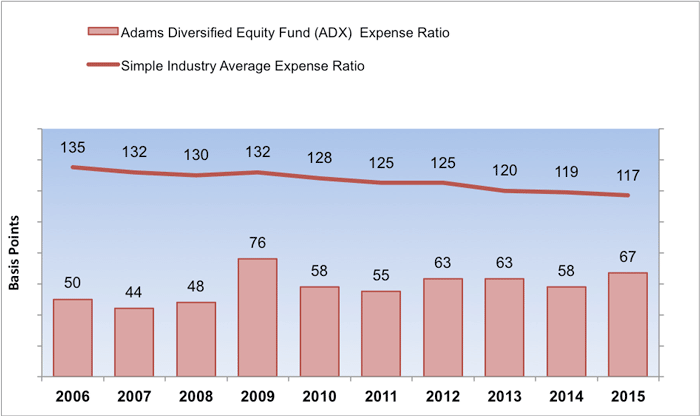The Princeton economist Burton Malkiel is probably the most recognized advocate for passive investing strategies and has been since he published “A Random Walk Down Wall Street” some 40-plus years ago. But even he would say that it’s not the strategies that diminish the performance of active managers, it’s the expenses they incur.
Actively managed funds are on the radar of most investors, thanks to the potential for active managers to deliver superior returns when compared to index funds. Active strategies allow fund managers the opportunity to think independently and invest in individual stocks offering the greatest potential for outperformance. Active fund managers also structure portfolios that balance both risk and return and bring to bear experienced research and quantitative analysis capabilities, which can deliver an information edge over most passive strategies.
Holding all else equal, a lower expense ratio translates into higher returns
However, active management comes at a cost. Investment managers incur ongoing expenses to cover extensive analysis of securities, research and portfolio management. All funds also experience additional costs for fund administration, daily fund accounting and pricing, shareholder services and other operating costs. Together, these expenses determine the fund’s annual expense ratio, which is simply the costs incurred, divided by average net assets.
These costs play a critical role in performance, as every dollar spent on these expenses is directly reflected in the total return realized by individual investors. Said another way, holding all else equal, a lower expense ratio translates into higher returns. This is why Adams Funds works so diligently to keep expenses low for shareholders, while maintaining a disciplined approach to identify attractive investments and manage risk.
Expense ratios of individual funds differ considerably, with some exceeding 200 basis points. The variation in expenses reflects many factors including investment objectives, fund assets, and market cap focus. Unlike Adams Funds, many other funds levy another layer of fees in addition to reported expense ratios. These fees are gaining the attention of regulators, as an SEC Investor Advisory Committee recently approved a recommendation for better disclosure around fees from traditional mutual funds. These modifications are premised on the idea that investors need to consider their total cost of investing.
Adams Funds’ closed-end funds, Adams Diversified Equity Fund and Adams Natural Resources Fund, are traded on the New York Stock Exchange and do not incur distribution fees. This, in addition to a close attention to other costs, makes a considerable difference. The chart below highlights Adams Diversified Equity Fund’s track record in delivering a low expense ratio compared to the industry average. Lower expenses combined with strong investment performance have resulted in solid growth for our shareholders for over 85 years.

Sources: Morningstar and Internal Data.
What often gets lost in the passive vs. active debate is that strategies differ markedly from firm to firm. At Adams, we understand that alpha is borne of in-depth research and original thinking, which together translate into the conviction to pick quality stocks characterized by their long-term growth potential. We also understand the importance of keeping our expenses low. When combined with capital appreciation and distributions, lower expenses enhance the value proposition we strive to deliver to our shareholders. This provides our investors with all the advantages of an actively managed strategy.
